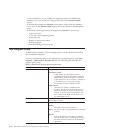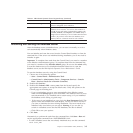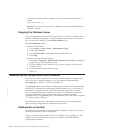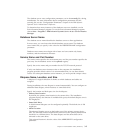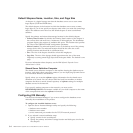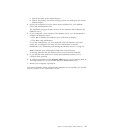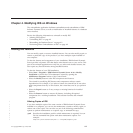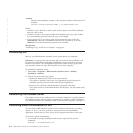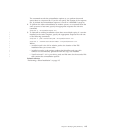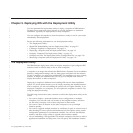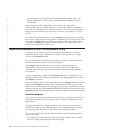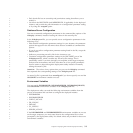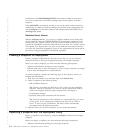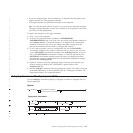
-instnum
Specifies the installation number of the copy that requires maintenance. For
example:
setup.exe -instnum installation number -s -f1"X:path\response file"
Where:
v installation path is the full or relative path to the location of the IDS installation
that you want to alter.
v installation number is the unique number that identifies each copy; this number
was automatically generated when the copy was installed.
v X:path\response file is your drive, path, and response file name of the file
(uninstall.ini) where the uninstallation options were recorded or of the file
(maint.ini) where the maintenance options were recorded.
Related tasks
“Installing a Copy of IDS on a Computer” on page 2-1
Uninstalling IDS
Back up your IBM Informix Dynamic Server system before you uninstall.
Important: Any groups and user accounts that you used for this installation will
be removed in both local and domain installations, except when there are other
instances on the disk. The uninstallation application cannot remove groups and
user accounts if there are other IDS instances on the host computer.
To uninstall the database server:
1. Select Start > Programs > IBM Informix Dynamic Server > Modify
Installation > Remove
2. Choose one of the following options:
v Retains all databases, but removes all server binaries
This option is typically used when you upgrade the product because it
facilitates removing server binaries while preserving dbspace.
v Removes server binaries and all databases associated with them
This option removes all installed binaries and dbspaces. Use this option with
caution.
Reinstalling the Database Server
If an earlier version of the database server is already installed at a specific instance,
the installer provides options either to upgrade or to complete a fresh installation
at a different location. See “Multiple Copies of IDS on One Computer” on page 1-2.
Performing Silent Uninstallations of IDS
You can remove IBM Informix Dynamic Server without interactively providing
options. To do so, you must generate a response file for the uninstallation
application. Ensure that you have access to the original media files for this task.
To perform a silent uninstallation:
1. To uninstall an existing installation and record a response file, use this
command:
setup.exe -r -f1"X:path\uninstall.ini"
4-2 IBM Informix Dynamic Server Installation Guide for Windows
|
|
|
|
|
|
|
|
|
|
|
|



